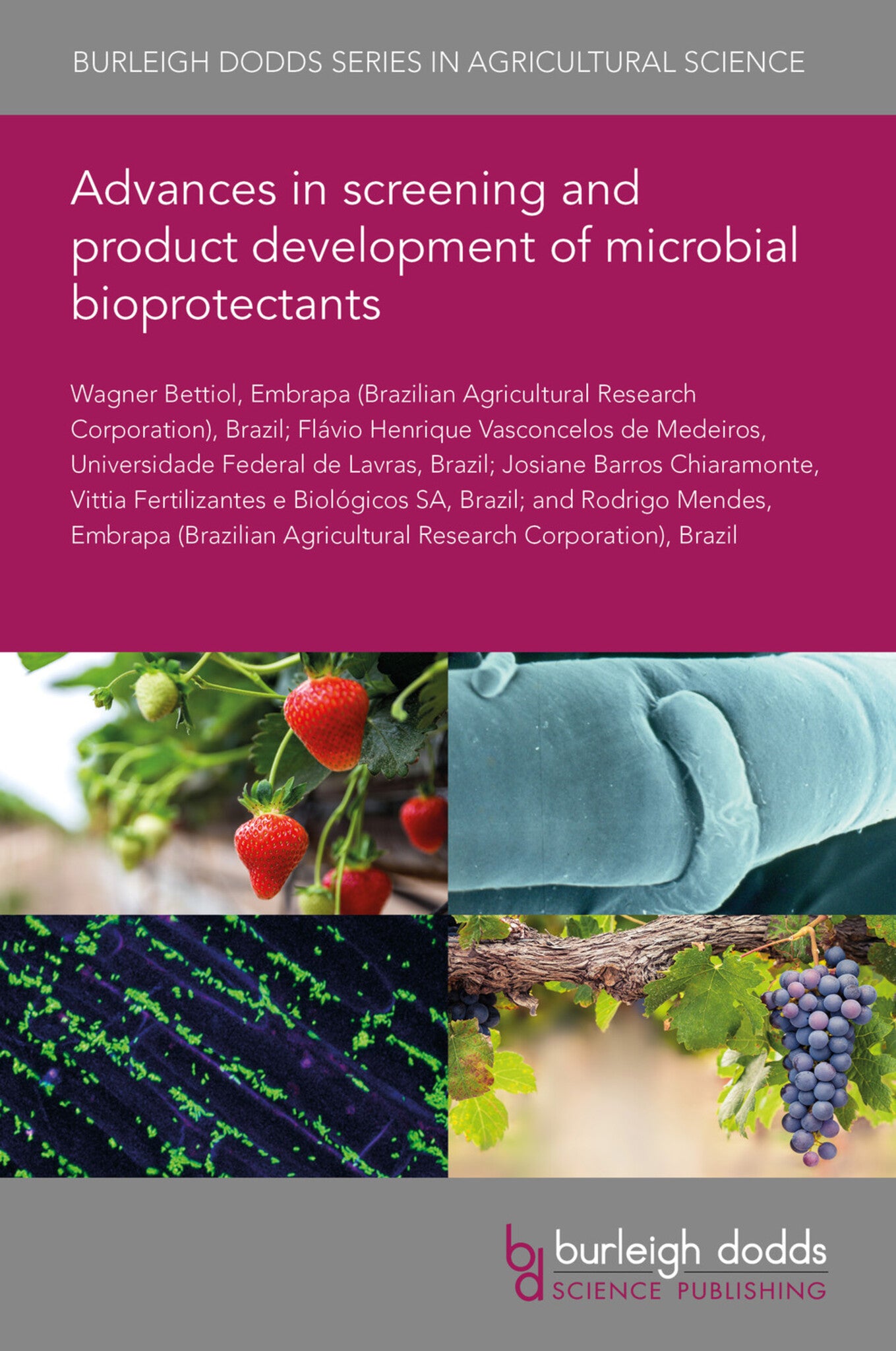We're sorry. An error has occurred
Please cancel or retry.
Advances in screening and product development of microbial bioprotectants

Some error occured while loading the Quick View. Please close the Quick View and try reloading the page.
Couldn't load pickup availability
- Format:
-
22 November 2021


TECHNOLOGY & ENGINEERING / Agriculture / Agronomy / Crop Science, Agronomy and crop production, TECHNOLOGY & ENGINEERING / Agriculture / Sustainable Agriculture, TECHNOLOGY & ENGINEERING / Pest Control, Sustainable agriculture, Pest control / plant diseases, Botany and plant sciences

1 Introduction 2 Screening microorganisms for biological control of plant diseases: exclusive and inclusive approaches 3 The nine-step approach to screening for biocontrol agents 4 Non-traditional biocontrol agents of plant diseases: entomopathogenic fungi and bacteria 5 Non-traditional biocontrol agents of plant diseases: bacteriophages and mycoviruses 6 Niche markets for biocontrol agents 7 Regional markets for biocontrol agents 8 Formulation of biocontrol agents 9 The role of the microbiome in biocontrol 10 Microbiome engineering for disease control 11 Future trends 12 Where to look for further information 13 Acknowledgements 14 References



